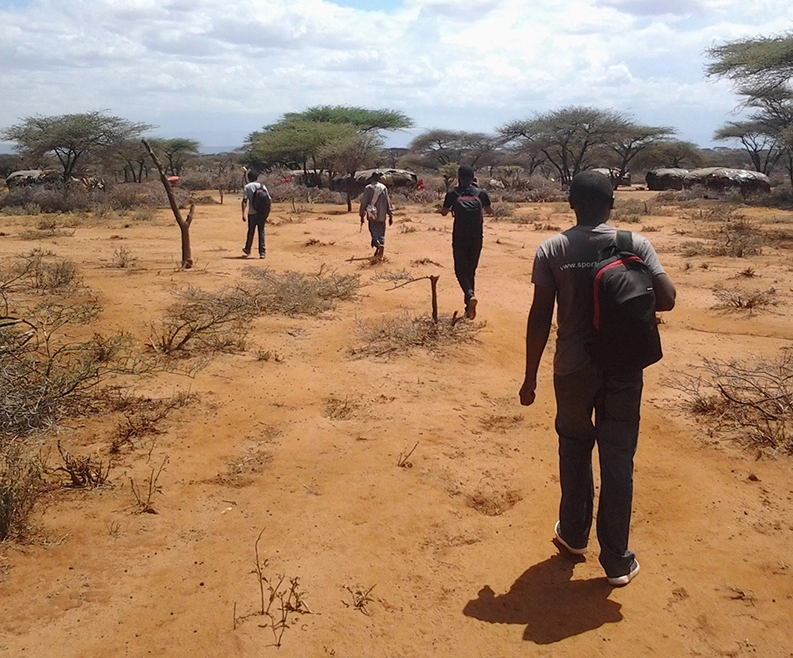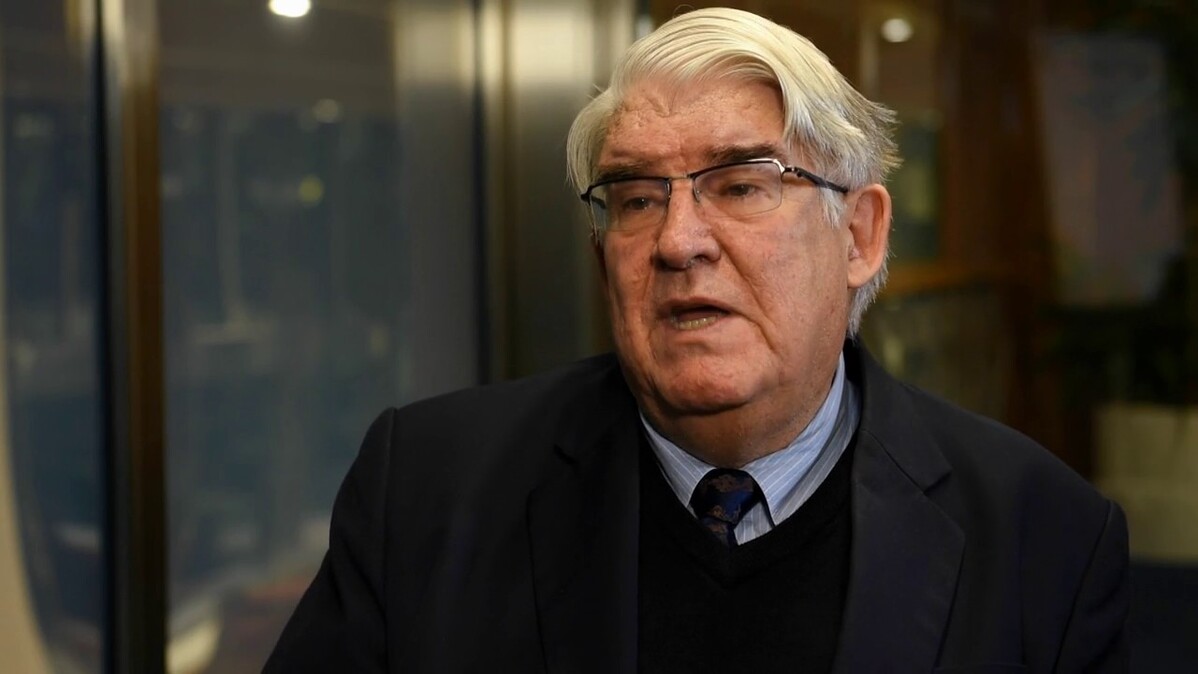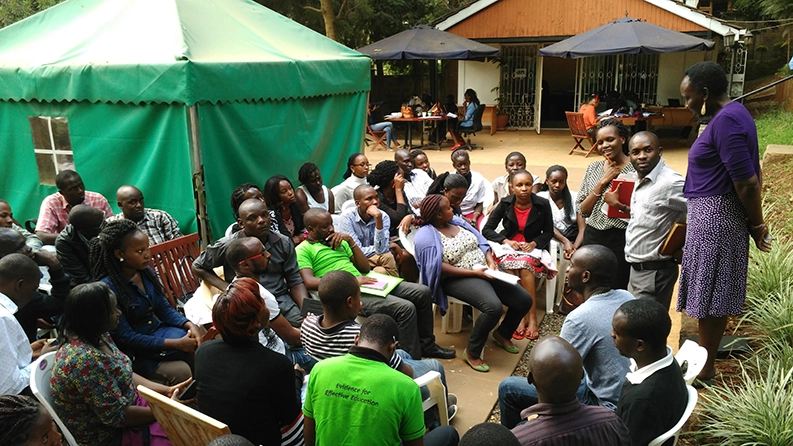In a world where access to essential medicines remains a challenge in low- and middle-income countries, Richard Laing has spent much of his life striving to make medicines available to more patients who need them. Laing, a professor at the Boston University School of Public Health in the US and a former World Health Organization official, believes that many efforts to expand access to medicines share a common weakness: they fail to gather sufficient evidence on how effective they are.
So when Novartis launched an innovative program called Novartis Access to supply low-cost medicines for chronic diseases to some of the world’s poorest countries, the company asked Laing to do an independent study to measure its impact.
The program aims to be a sustainable, commercially viable way to address the increasing burden of chronic diseases on poor people and societies. Each year around 28 million people die from chronic conditions in low- and middle-income countries, representing nearly 75% of the global death toll.
Novartis Access is a portfolio of 15 medicines for heart disease, diabetes, respiratory illnesses and breast cancer, supplied at USD 1 per treatment per month to governments and other public-sector customers in lower-income countries.

As the program began to roll out in Kenya, Laing conducted research to assess people’s access to medicines. The findings represent a baseline against which to measure the program’s impact. It is the first time a program of this kind focused on poorer countries has had such rigorous scrutiny, and the learnings will be vital as Novartis Access rolls out to as many as 30 countries in the coming years.
In a recent conversation, Laing described the research and explained why he believes it is critical to the success of Novartis Access.
Why is there a need to evaluate programs like Novartis Access?
Laing: For many years, pharmaceutical companies have undertaken innovative programs to give people in the world’s poorest countries access to medicines. However, most of these initiatives have not been evaluated, or were assessed using poor-quality methods. No one knows whether they actually have an impact on the people they are intended to help.
One thing we know about programs offering low-priced products – not just medicines, but also food or fuel – is that it’s often not the poorest people who benefit, but the middle-income groups who know how to access the medicines and the appropriate treatment. For that reason, we’re very keen to find out what happens at the household level, particularly to the poorest families.
Novartis Access is an important new initiative focusing on noncommunicable diseases, unlike most previous programs, which have targeted infectious diseases. Conducting a robust evaluation is critical to understanding what aspects work well and what could be improved.
 VIDEO
VIDEO
How will you measure the impact of the program on people and society?
Laing: We are measuring the impact of Novartis Access by means of a randomized controlled trial. Counties in Kenya have been randomly selected to receive the Novartis medicines. We have conducted interviews with workers at healthcare facilities and people with noncommunicable diseases. We will repeat them after one year and at the end of the two-year study.
In addition, we are calling the facilities to find out what medicines are available, and at what price. We do the same with half the households to determine whether they are actually paying what the facilities say they are charging, how much medicine they have purchased, and how this varies according to household income.
We will continue this monitoring by regular telephone calls. This will enable us to find out what’s happening at the facilities, and what volume of medicines is going into the households each month and at what price. We will also monitor the supply side to find out what medicines are being provided, both by Novartis and other companies, and how this changes as a result of the initiative.
While it’s very people-intensive at this stage, the aim is to set up a sound process so that when Novartis Access is launched in other countries, it can be evaluated more simply, using smaller sample sizes.
What challenges have you faced in setting up this evaluation?
Laing: Novartis Access is complex, with many components – different diseases, different population groups, different medicines, and different environments in which they are used. In addition, dealing with noncommunicable diseases is a lifelong commitment, and many of the patients were already on treatment and are changing to Novartis Access medicines as part of the program. So it’s a complex task to identify and measure the impact of the program, and to gather all the information we need.

How did you identify the patients for the study?
Laing: We identified the patients by visiting thousands of families, going house to house in a randomized way asking if anyone had been diagnosed and prescribed medicines for four noncommunicable diseases: cardiovascular disease, diabetes, breast cancer and asthma.
In one county, as many as 30% of the households we visited had someone who had been diagnosed and treated for one of these diseases, so in these high-prevalence areas we had to visit three or four households to find one patient. However, in the north and west of Kenya the prevalence reduced to 1.8% in one of the counties, so we had to visit 2,500 households and still found fewer than the number of patients we needed for the trial.
We were surprised by this tremendous variation. We do not know whether the low prevalence in some areas reflects a lack of diagnosis, or the lifestyle of the nomadic people living there.
What does the baseline study show?
Laing: The baseline study is reassuring. The counties selected for the study were well matched. There were no significant differences between the intervention and control counties. Any differences measured in the future will very likely be due to Novartis Access. We also found a strong relationship between poverty and the proportion of household expenditure that is spent on medicines. In other words, the poorer the household, the more people spend on medicines as a proportion of their total health expenditure. This emphasizes the importance of Novartis Access because it will potentially help the poorest in society.
What makes this study different from previous efforts to measure the impact of access programs?
Laing: Past measurement efforts have almost always occurred after the event, when a company decides to evaluate its efforts at the end of a project. The problem with these evaluations is that you don’t know what the situation was like before, and there is often no control group, so the evaluations have tended to be weak even when the best interventions have taken place. These initiatives may be wonderful in bringing medicines to people, but demonstrating an impact has been impossible because there has never been a rigorous study.
How will this benefit other efforts to improve access to healthcare and medicines?
Laing: What is particularly impressive about this evaluation is the willingness of Novartis to be totally transparent. All the agreements and protocols are being posted on our website, and we will post the data as and when they become available so that anyone who is interested can use the same methods and access the results. Other companies are already coming to us and saying they would like to do a similar study, so by agreeing to this open sharing approach, Novartis has set the standard for others to follow.
What will be the longer-term impact of your assessment on the Novartis Access program?
Laing: Everything depends on the results. If we find that medicines are reaching the facilities but not the households, it means we will have to focus on the health workers and encourage them to make these high-quality, lower-cost medicines available to patients. If we find the medicines are in the richer households but not the poorer ones, Novartis Access will need to focus its community mobilization efforts on the lower end of the economic spectrum.
If the aim is to increase the awareness of noncommunicable diseases, particularly in those counties in Kenya with very low prevalence rates, then that will be a different story again. Further investigation may be necessary to understand whether this is a result of under-diagnosis or healthier lifestyles. But I’m utterly committed to the concept that if there is to be community education, we must have baseline data to establish what people knew beforehand and how they changed their practices as a result of education or mobilization initiatives.
From these evaluations it will be possible for Novartis Access to amend its methods to take account of the findings, so that in the next country where the program operates, it can be implemented more effectively. And we hope that other companies will also draw from these lessons and apply them in their own programs.
We asked #accesstomedicine expert Prof Richard Laing to scrutinize #NovartisAccess


